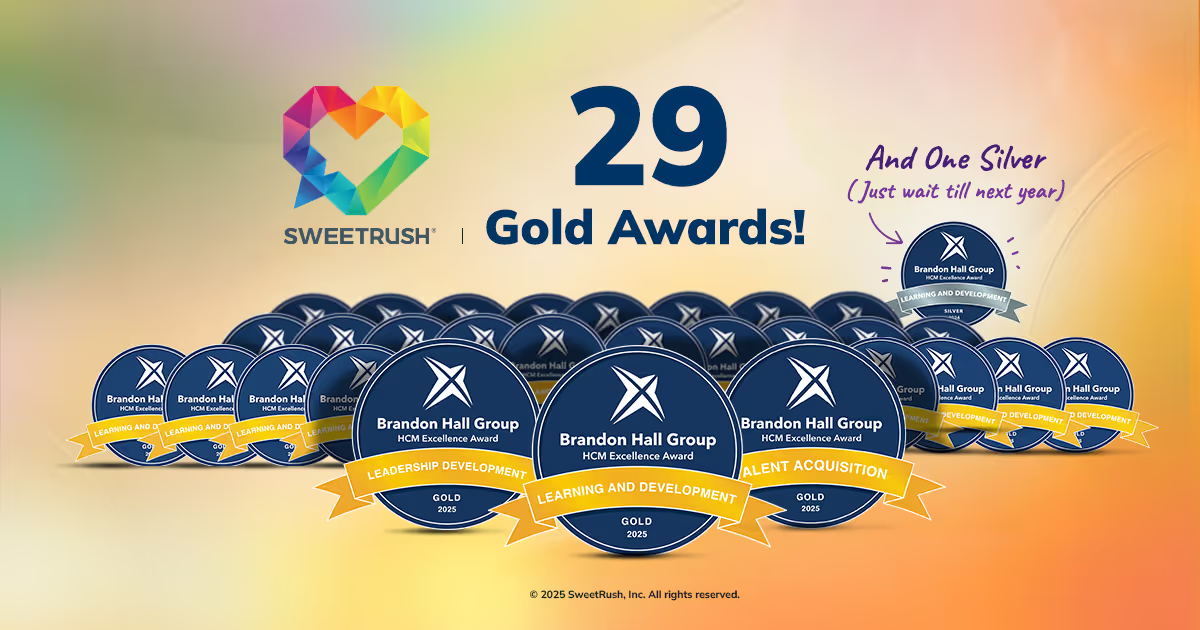


A winning learning and talent strategy—and creative solutions—will help your people change so your business can transform and thrive. Let’s make it happen.

Meet our CEO Danielle Hart and get a quick glimpse into who we are and what you’ll experience when we work together.
We are an end-to-end partner focused on solving your biggest challenges in workforce performance improvement and the integration of learning, talent, and technology. Our solutions are not only award-winning, but achieve dramatic return on investment.
Flip the cards to learn more!

From the start, we have said to our customers—in both words and actions—that we care about their success. Building deep connections with our client-partners has been a differentiating core value. Good relationships are good business.

We constantly push the boundaries of what’s possible. It’s a consequence of a team who are best-in-class at the work we love most.



What you can expect working with SweetRush
Real challenges. Innovative solutions. Measurable impact. Explore how we've helped organizations like yours transform through the power of learning.
We’re thankful to have long-term, trusted relationships based on mutual success with clients who see the value in investing in their people.
But you’ve really won when the C-Suite sees the impact you’ve made. Impact is the real reward, and what we’ll achieve together.



